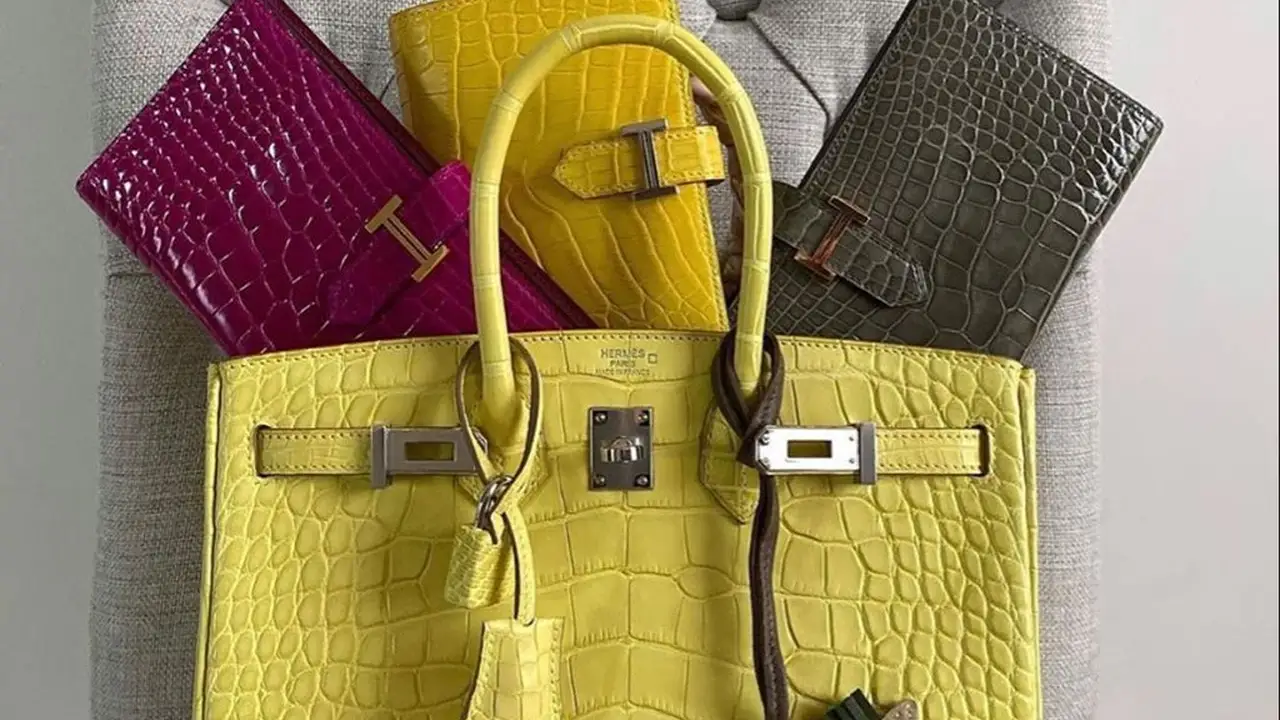Specialty Bag Care: Maintaining Your Investment
Proper care extends the life of your specialty bags, protecting your investment and ensuring they remain stylish and functional for years. This guide provides essential tips on cleaning, storing, and maintaining various specialty bags, along with product recommendations and usage scenarios. Discover how to keep your bags looking their best, understand the nuances of different materials, and compare popular options to find the perfect fit for your needs and budget.

So, you've got a swanky specialty bag, huh? Maybe it's a high-end camera bag, a rugged tactical pack, a chic diaper bag, or even a super-organized travel backpack. Whatever it is, you probably dropped some serious cash on it, and you want to keep it looking good and functioning perfectly for as long as possible. This isn't just about aesthetics; it's about protecting your investment. Think of it like taking care of a car – regular maintenance prevents bigger (and more expensive) problems down the road. Let's dive into the nitty-gritty of specialty bag care.
Understanding Your Bag's Material: Key to Proper Cleaning
First things first: know your bag! Different materials require different care techniques. Ignoring this can lead to irreversible damage. Common materials include:
- Nylon: Durable and water-resistant, nylon is often used in tactical bags and backpacks.
- Polyester: Similar to nylon but generally less expensive, polyester is found in many everyday bags.
- Canvas: A classic material, canvas is sturdy and can be waxed for water resistance.
- Leather: Luxurious and durable, leather requires special care to prevent drying and cracking.
- Vinyl/PVC: Water-resistant and easy to clean, vinyl is often used in diaper bags.
Check the manufacturer's label for specific cleaning instructions. If there isn't one, here's a general guideline:
Cleaning Nylon and Polyester Bags
Nylon and polyester are relatively easy to clean. For minor stains, use a damp cloth and mild soap. For tougher stains:
- Empty the bag completely.
- Turn the bag inside out and shake out any loose debris.
- Spot clean with a soft brush and a mixture of warm water and mild detergent (dish soap works well).
- Rinse thoroughly with clean water.
- Hang the bag upside down to dry completely. Avoid direct sunlight, as this can fade the color.
Product Recommendation: Nikwax Tech Wash is an excellent option for cleaning nylon and polyester bags while preserving their water-repellent properties. It's available for around $15 on Amazon.
Cleaning Canvas Bags
Canvas can be cleaned similarly to nylon and polyester, but be extra careful with waxed canvas. Avoid harsh detergents, as they can strip the wax coating. For waxed canvas:
- Wipe down with a damp cloth.
- For stubborn stains, use a gentle brush and a mild soap specifically designed for waxed canvas.
- Rinse sparingly.
- Re-wax the canvas as needed to maintain its water resistance.
Product Recommendation: Otter Wax Fabric Wax is a great choice for re-waxing canvas bags. A tin costs around $20 and will last for multiple applications.
Cleaning Leather Bags
Leather requires special care to prevent drying and cracking. Avoid getting leather bags soaking wet. For cleaning:
- Wipe down with a soft, dry cloth to remove dust and dirt.
- Apply a leather cleaner and conditioner according to the manufacturer's instructions.
- Buff the leather with a clean cloth.
Product Recommendation: Leather Honey Leather Conditioner is a popular and effective option for conditioning leather bags. A bottle costs around $20 and will keep your leather supple and protected.
Cleaning Vinyl/PVC Bags
Vinyl and PVC are generally easy to clean with a damp cloth and mild soap. For tougher stains, you can use a diluted bleach solution (1 part bleach to 10 parts water), but test it on an inconspicuous area first to ensure it doesn't discolor the material.
Proper Storage: Protecting Your Investment When Not in Use
How you store your bag is just as important as how you clean it. Here's how to store different types of specialty bags:
General Storage Tips
- Empty the bag: Before storing, remove all items from the bag. This prevents odors and potential damage.
- Clean the bag: Clean the bag thoroughly before storing it to prevent dirt and grime from setting in.
- Stuff the bag: Stuff the bag with acid-free tissue paper or bubble wrap to maintain its shape. Avoid using newspaper, as the ink can transfer to the bag.
- Store in a dust bag: Use a dust bag to protect the bag from dust, dirt, and sunlight.
- Store in a cool, dry place: Avoid storing bags in humid environments, as this can lead to mildew and mold growth.
Storing Leather Bags
Leather bags require extra care when storing. In addition to the general storage tips:
- Condition the leather: Apply a leather conditioner before storing to prevent the leather from drying out.
- Avoid direct sunlight: Direct sunlight can fade and damage leather.
- Store in a well-ventilated area: Leather needs to breathe to prevent mildew and mold growth.
Storing Tactical Bags and Backpacks
Tactical bags and backpacks are often made of durable materials, but they still require proper storage. In addition to the general storage tips:
- Loosen straps and buckles: Loosening straps and buckles can prevent them from becoming creased or damaged.
- Store flat or hanging: Store the bag flat or hanging to prevent it from becoming misshapen.
Storing Camera Bags
Camera bags often contain sensitive equipment, so proper storage is crucial. In addition to the general storage tips:
- Ensure the bag is completely dry: Moisture can damage camera equipment.
- Store in a climate-controlled environment: Extreme temperatures and humidity can damage camera equipment.
- Consider using silica gel packets: Silica gel packets can help absorb moisture and prevent mold growth.
Specific Product Recommendations and Usage Scenarios
Let's talk specific bags and how to care for them. Here are a few examples:
Peak Design Everyday Backpack (Camera Bag)
Usage Scenario: This backpack is designed for photographers and everyday carry. It features customizable dividers and plenty of pockets for organizing camera gear and personal items.
Care: The Peak Design Everyday Backpack is made of a durable nylon canvas. Clean it with a damp cloth and mild soap. For tougher stains, use a soft brush. Avoid using harsh detergents or bleach. The bag is also weather-resistant, but you can re-treat it with a water-repellent spray as needed.
Price: Around $300.
Osprey Atmos AG 65 (Backpacking Backpack)
Usage Scenario: This backpack is designed for long-distance backpacking trips. It features a comfortable suspension system and plenty of room for gear.
Care: The Osprey Atmos AG 65 is made of durable nylon. Clean it with a damp cloth and mild soap. For tougher stains, use a soft brush. Avoid using harsh detergents or bleach. The suspension system can be cleaned with a damp cloth and mild soap. Make sure to dry the bag completely before storing it.
Price: Around $270.
Timbuk2 Classic Messenger Bag
Usage Scenario: This messenger bag is perfect for commuting, school, or everyday carry. It's durable, water-resistant, and features plenty of pockets for organizing your belongings.
Care: The Timbuk2 Classic Messenger Bag is made of durable nylon. Clean it with a damp cloth and mild soap. For tougher stains, use a soft brush. Avoid using harsh detergents or bleach. The bag is also water-resistant, but you can re-treat it with a water-repellent spray as needed.
Price: Around $130.
Fjallraven Kanken (Everyday Backpack)
Usage Scenario: This iconic backpack is popular for its minimalist design and durability. It's perfect for school, work, or everyday carry.
Care: The Fjallraven Kanken is made of Vinylon F, a durable and water-resistant fabric. Clean it with a soft brush, lukewarm water, and mild soap. Avoid machine washing or using harsh detergents. Allow the bag to air dry completely.
Price: Around $80.
Comparing Different Bag Materials and Their Care Requirements
Choosing the right bag material depends on your needs and lifestyle. Here's a quick comparison:
- Nylon: Durable, water-resistant, easy to clean. Ideal for tactical bags and backpacks.
- Polyester: Similar to nylon but less expensive. Suitable for everyday bags.
- Canvas: Sturdy and can be waxed for water resistance. Requires more maintenance than nylon or polyester.
- Leather: Luxurious and durable but requires special care. Not ideal for wet environments.
- Vinyl/PVC: Water-resistant and easy to clean. Good for diaper bags and other bags that need to be easily wiped down.
Repairing Minor Damage: Extending the Life of Your Bag
Even with the best care, bags can sometimes suffer minor damage. Here are a few common repairs you can make yourself:
Repairing Tears
Small tears in nylon or polyester bags can often be repaired with a needle and thread. Use a strong thread that matches the color of the bag. For larger tears, you may need to use a patch.
Replacing Zippers
Broken zippers are a common problem. You can often replace a zipper yourself with a zipper repair kit. These kits typically include a new zipper pull and instructions.
Replacing Buckles
Broken buckles can also be replaced. You can find replacement buckles at most hardware stores or online.
The Importance of Regular Maintenance
Regular maintenance is key to extending the life of your specialty bags. By cleaning, storing, and repairing your bags properly, you can protect your investment and keep them looking their best for years to come. Don't wait until your bag is falling apart to start taking care of it. A little bit of effort goes a long way.
:max_bytes(150000):strip_icc()/277019-baked-pork-chops-with-cream-of-mushroom-soup-DDMFS-beauty-4x3-BG-7505-5762b731cf30447d9cbbbbbf387beafa.jpg)






